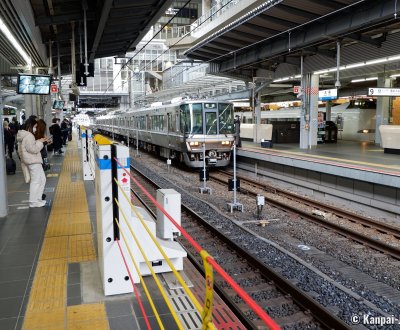The Kyoto-Osaka Journey
Osaka and Kyoto, respectively a modern economic hub and the former imperial capital, are 2 great sightseeing destinations in the Kansai area in Japan. With an approximately 50 kilometers (31 miles) distance between the cities, they are virtually neighbors and connected by their suburbs inthe south-west for Kyoto and in the north-east for Osaka.
The Kyoto-Osaka commute is part of many locals’ routine as they live and work between these 2 hubs. Tourists also choose one of those 2 cities as a base from which to make one-day trips according to what they have planned to visit.
The public transportation network is quite extensive, with a clear dominance of railway with 4 main train lines sharing the passengers’ flow. Railway is the most used and most convenient mean of transportation as it is direct. Depending on the route, it can also be the fastest or the most cost-effective.
The Suica IC Card can be used on the JR, Hankyu and Keihan networks to pay the travel fare at the platforms’ gates by contactless payment. Terminals for recharging the prepaid card are available at all the stations if needed.
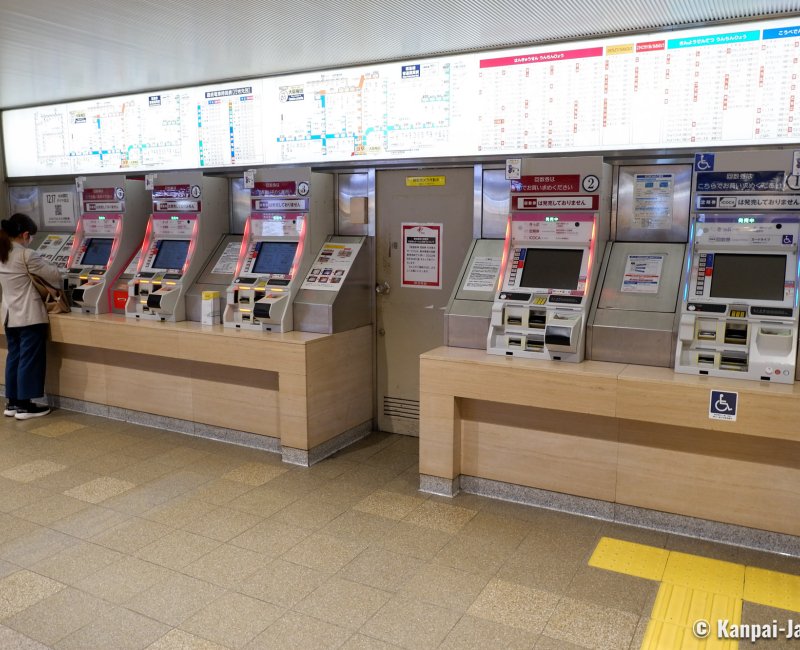
Shinkansen: the fastest way between Kyoto and Shin-Osaka
The Tokaido Shinkansen 🚅 line originating from Tokyo stops at Kyoto Station then at Shin-Osaka. With a 15 minutes travel time only, it is the fastest direct connection between the 2 cities and consequently the most expensive train: allow ¥1,440 (~US$9.23) for a one-way trip, including the seat reservation fee.
The Japan Rail Pass (or JR Pass) covers the cost of the trip on the Hikari and Kodama trains (not on Nozomi trains), but there are less of these 2 Shinkansen so they might not be the most convenient choice. Note that the regional passes of the JR West company (Kansai Area) do not cover the Tokaido Shinkansen.
Shin-Osaka station is slightly away north to the center of the city, and one must take a local JR line or the subway 🚇 (Midosuji Line) to go to the lively downtown (Umeda or Namba).
Kyoto JR line: the most usual via Osaka station
JRP holders can use the local JR lines as much as they want, otherwise, the fare between Kyoto and Osaka stations amounts to ¥570 (~US$3.66). Osaka Station is located in Umeda Ward in the north of the city center. There are 3 trains categories:
- The Local (普通 futsu), the slowest with a ~50 minutes travel time as it stops at each of the 16 stations on the line. In return, it is usually less crowded during the rush hours as it is not the commuters’ favorite;
- The Rapid (快速 kaisoku), that takes ~42 minutes and stops at Shin-Osaka, then at every station after Ibaraki and bound for Kyoto;
- The Special Rapid (新快速 shin-kaisoku) speeds up in ~30 minutes with only 2 stops in Shin-Osaka and Takatsuki stations.
From Monday to Saturday, trains depart on average every 15 minutes for the 3 train categories. In the morning rush hours (7:30 a.m. to 9 a.m.), the Special Rapid trains run every 10 minutes. On Sunday and holidays, there is also at least one train per fifteen minutes, regardless of its categories.
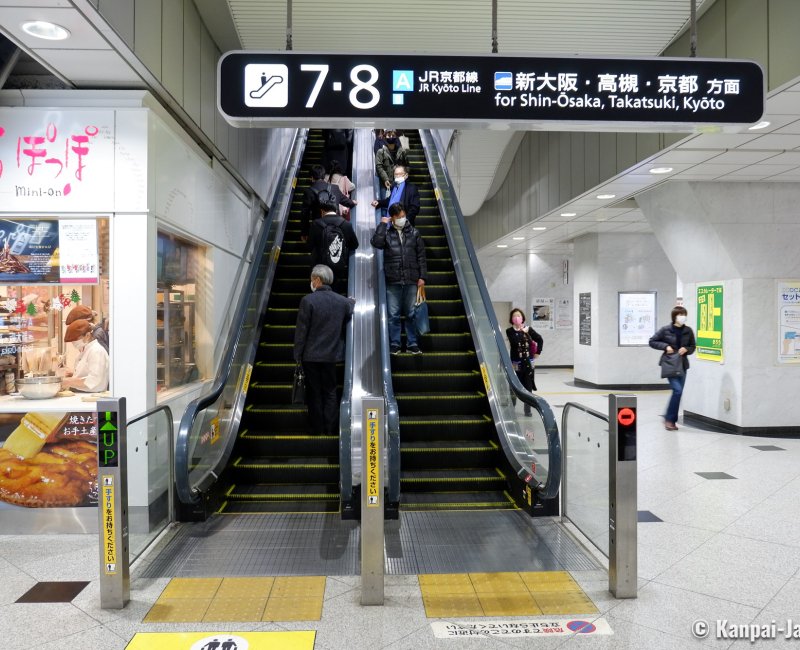
Hankyu-Kyoto Line: the cheapest between Kawaramachi and Umeda
Hankyu private railway operates a line between Kawaramachi (in the center of Kyoto) and Osaka-Umeda station, located 5 minutes’ walk to Osaka JR station and accessible thanks to an outdoor passageway connecting the 2 stations’ buildings.
With a ¥400 (~US$2.57) maximum fare, the Hankyu-Kyoto train offers the cheapest trip and also the most convenient to connect the lively downtown of the former imperial city and explore the main Shijo-dori avenue. It provides an easy access to the banks of the Kamo-gawa river, near Gion district and close to Yasaka-jinja shrine, surrounded by Maruyama Park. There are also several types of trains:
- The Limited Express (特急 tokkyu) is the fastest, in ~45 minutes, and departs on average every 10 minutes;
- The Rapid Express (快速急行 kaisoku tokkyu) has 2 more stops than the Limited Express before leaving Kyoto and connects Osaka in ~50 minutes;
- The Semi Express (準特急 juntokkyu or 準急 junkyu) runs in ~1h05; and,
- The Local (普通 futsu) that takes ~1h20 and stops at every station on the line.
Moreover, Hankyu trains travel on the west of Kyoto and serve Katsura station, with an access, among other places, to the eponymous Imperial Villa and to the green suburb of Arashiyama (with a transfer on another line).
The Hankyu line is less crowded than the JR, which ensures travelers to have more seats available, even for the most popular rapid trains; if the train you are about to take is too crowded, just wait for the next one to be sure to find a seat.
International travelers can use the Hankyu Tourist Pass that becomes cost-effective with at least 1 Kyoto-Osaka round-trip on the same day. Allow ¥700(~US$4.49) for 1 day or ¥1,200(~US$7.70) for 2 days.
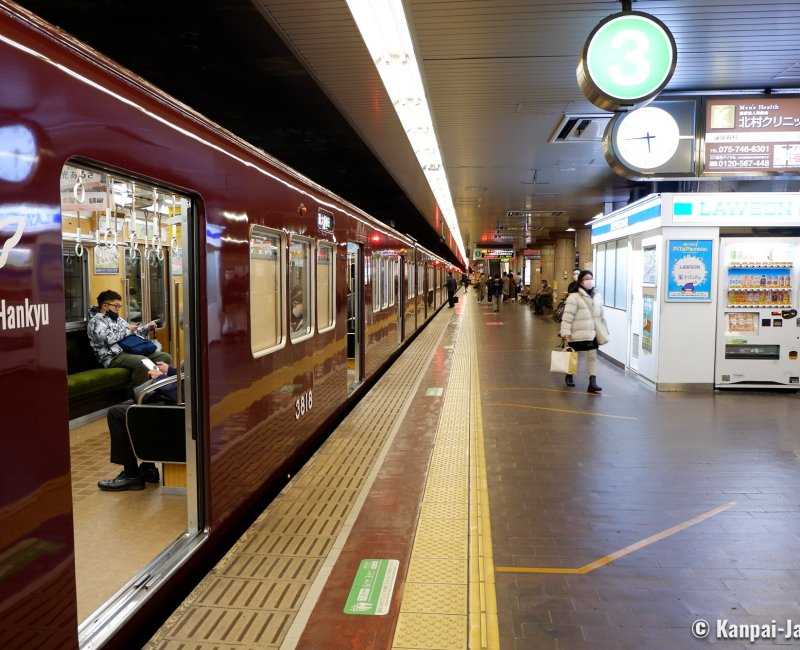
Keihan train: the longest between the north of Kyoto and the south of Umeda
Moving away from the 2 cities’ main stations with the Keihan main line (and its extension Oto) offers an alternative connection between Demachiyanagi station in the north-east of Kyoto and Yodoyabashi in the south of Umeda (1 subway station away). Again, several types of trains share the tracks, including the fastest ones:
- The Limited Express (特急 tokkyu) and the Rapid Express (快速急行 kaisoku tokkyu) that take ~1h;
- The Rapid Limited Express Raku Raku (快速特急う洛楽 kaisoku tokkyû rakuraku) connecting in only ~45 minutes as it only stops in Kyoto and Osaka, namely from Demachiyanagi to Shichijo, then from Kyobashi to Yodoyabashi. It has however a lower frequency than the other trains.
A one-way trip is ¥470 (~US$3.01) for a little more than 50 kilometers and an about 1h30 long trip for the slowest one. Note that Keihan trains also serves the following stations:
- Iwashimizu, to discover its great Hachiman-gu shrine;
- Fushimi-Momoyama or Inari to explore the south of Kyoto; and,
- Gion-Shijo, a convenient stop to visit Gion and the touristic area of Higashiyama.
Keihan Railways has set up the Kyoto-Osaka Sightseeing Pass for international visitors under a temporary visa, to purchase in Japan, costing ¥900 (~US$5.77) for 1 day and ¥1,400 (~US$8.98) for 2 days. They also have a Premium Car 🚙 offer to travel in a more luxurious, staffed carriage with comfortable seats; add a ¥500(~US$3.21) supplement on a Kyoto-Osaka trip.
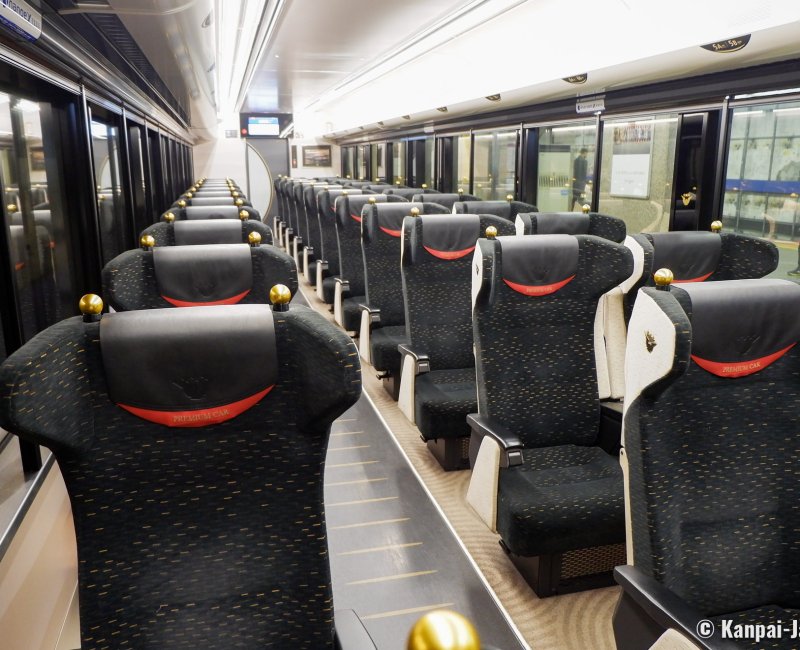
By the road: car, taxi and bus
Transportation by road to connect Kyoto-Osaka can be chosen for more flexible schedules or to transport over-sized baggage, but the cost and travel time ratio is always less interesting than the train:
- By rental car, allow about ~1h30 to ~2h to drive between the 2 cities and ~¥3,500 (~US$22.44) for tolls, not including the fuel expenses;
- With a taxi allow on average ~1h30 for a ¥30,000 (~US$192.40) estimated cost, to share between several passengers if possible.
- The coach bus is mainly used between Universal Studios Japan (USJ) theme park and Kyoto station; allow ~2h and ¥900 (~US$5.77) per trip.
Two-wheels amateurs can bicycle the 50 kilometers (~31 miles) between the 2 cities in about 2 to 3 hours on average. Bike 🚲 lanes or little frequented road, especially along the Yodo-gawa and Katsura-gawa rivers allow to ride in good conditions and enjoy the landscape.
Connection with KIX and Itami airports
To go to Kyoto from the Kansai International Airport (KIX) located in the bay in the south of the Osaka prefecture, the fastest mean is to take the Airport Express Haruka train, for a ~75 minutes trip. It is covered by the JR Pass, a trip costs ¥3,630 (~US$23.28) including the seat reservation or ¥2,900 (~US$18.60) without reservation.
This Limited Express also connects the center of Osaka via Tennoji station in half an hour, or Shin-Osaka in ~50 minutes. Additionally, are also available:
- Kansai Airport Rapid Service JR train to connect to Osaka station in ~70 minutes or Kyobashi in ~80 minutes for ¥1,210 (~US$7.76);
- Nankai Rapi:t or AirPort Express trains that respectively connect Namba in ~35 minutes for ¥1,450 (~US$9.30 in regular seat) or ~45 minutes for ¥930 (~US$5.96).
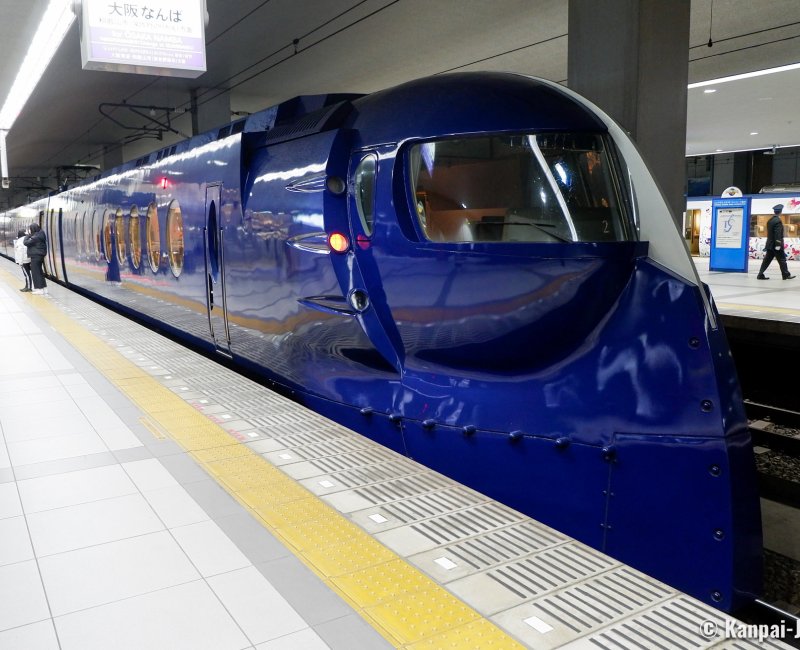
Better known as Itami Airport (ITA), about 15 kilometers from Umeda, Osaka International Airport ensures domestic flights ✈️ and connections with Asian countries, but no direct flights with Europe. It is mainly accessible thanks to the Airport Limousine Bus:
- ~50 minutes and ¥1,340 (~US$8.59) from Kyoto;
- ~30 minutes and ¥650 (~US$4.17) from Osaka (Umeda) or Namba stations.
The monorail 🚝 serving the northern suburb of Osaka is the only railway transportation to Itami:
- ~12 minutes and ¥340 (~US$2.18) from Senri-Chuo station in Toyonaka, transfer on the subway Midosuji line to reach Osaka;
- ~24 minutes and ¥340 (~US$2.82) from Minami-Ibaraki station, transfer on the Hankyu Line to reach Kyoto.
These 2 airports, KIX and Itami, are located in the suburb of Osaka and are the closest and the most used to reach Kyoto by air.

